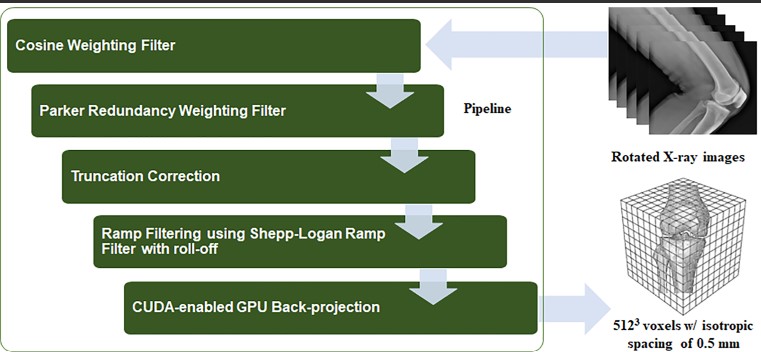최장환 (Jang Hwan Choi) 교수님의 연구 The effect of patellofemoral pain syndrome on patellofemoral joint kinematics under upright weight-bearing conditions 가 PLOs one에 출판되었습니다. 축하드립니다!
Journal DOI: https://doi.org/10.1371/journal.pone.0239907
Abstract
Patellofemoral pain (PFP) is commonly caused by abnormal pressure on the knee due to excessive load while standing, squatting, or going up or down stairs. To better understand the pathophysiology of PFP, we conducted a noninvasive patellar tracking study using a C-arm computed tomography (CT) scanner to assess the non-weight-bearing condition at 0° knee flexion (NWB0°) in supine, weight-bearing at 0° (WB0°) when upright, and at 30° (WB30°) in a squat. Three-dimensional (3D) CT images were obtained from patients with PFP (12 women, 6 men; mean age, 31 ± 9 years; mean weight, 68 ± 9 kg) and control subjects (8 women, 10 men; mean age, 39 ± 15 years; mean weight, 71 ± 13 kg). Six 3D-landmarks on the patella and femur were used to establish a joint coordinate system (JCS) and kinematic degrees of freedom (DoF) values on the JCS were obtained: patellar tilt (PT, °), patellar flexion (PF, °), patellar rotation (PR, °), patellar lateral-medial shift (PTx, mm), patellar proximal-distal shift (PTy, mm), and patellar anterior-posterior shift (PTz, mm). Tests for statistical significance (p < 0.05) showed that the PF during WB30°, the PTy during NWB0°, and the PTz during NWB0°, WB0°, and WB30° showed clear differences between the patients with PFP and healthy controls. In particular, the PF during WB30° (17.62°, extension) and the PTz during WB0° (72.50 mm, posterior) had the largest rotational and translational differences (JCS Δ = patients with PFP—controls), respectively. The JCS coordinates with statistically significant difference can serve as key biomarkers of patellar motion when evaluating a patient suspected of having PFP. The proposed method could reveal diagnostic biomarkers for accurately identifying PFP patients and be an effective addition to clinical diagnosis before surgery and to help plan rehabilitation strategies.


